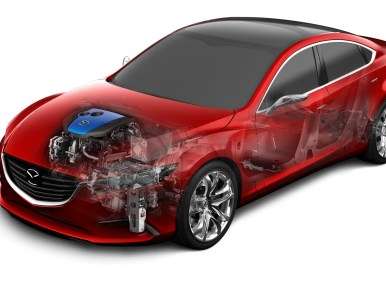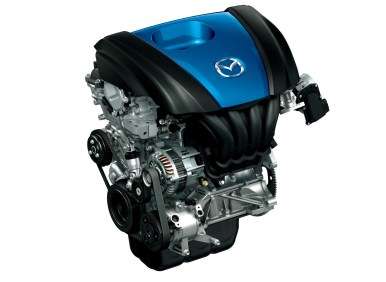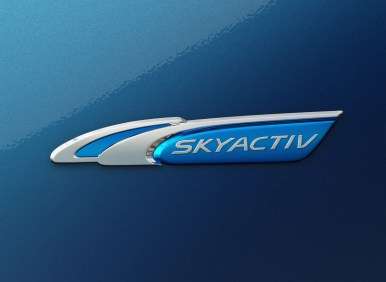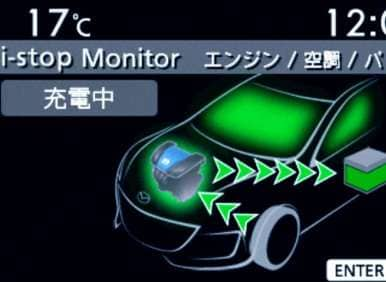Recent Articles
Popular Makes
Body Types
Mazda3 to Get Capacitor-based Regnerative Braking?

Although it is working on a hybrid version of the next Mazda6, Mazda has focused much of its fuel-efficiency efforts on fine-tuning more traditional internal-combustion powertrains: Witness the new Skyactiv technologies debuting on the 2012 Mazda3, which joins the 40-mpg club this year with a sedan model rated at 28 mpg city/40 mpg highway/33 mpg combined. And beginning next year, the automaker will start squeezing yet more mpg out of its gas/diesel engines, thanks to a ground-breaking technology with the tongue-breaking name of “i-ELOOP.”
Rebooting Regenerative Braking
The i-ELOOP system—per Mazda, the name is an “adaptation” of “Intelligent Energy Loop”—is an enhancement of today’s regenerative braking setups that capture energy during vehicle braking, then use that power to lighten the load on the engine under certain scenarios. The i-ELOOP breakthrough is that the recaptured energy is stored in a capacitor instead of a battery pack, providing some notable advantages. Capacitors can be charged quicker than batteries, then also put that stored power to use faster as well, and they’re more robust than batteries, too, since they are better at resisting the kind of deterioration that can affect batteries after constant use. There are also non-negligible weight savings as compared to hybrids, since vehicles with i-ELOOP don’t have to carry a dedicated battery and electric motor.
The result is expected to be a fuel-efficiency gain of about 10 percent in stop-and-go traffic, and that can be improved further when i-ELOOP is combined with Mazda’s i-stop technology. (The latter is a fuel-saving system that stops the engine when a vehicle is idling and seamlessly restarts it when the driver’s foot presses the accelerator.)

Timeout for Tech Talk
For those who want more of the nitty-gritty on how i-ELOOP works, here’s the lowdown: the system includes a 12-25V variable voltage alternator, a low-resistance electric double-layer capacitor designed specifically for i-ELOOP, and a DC/DC converter. As soon as the driver’s foot comes off the accelerator, the system kicks in, with the alternator changing kinetic energy into electricity at up to 25 volts. The electricity then gets stored in the capacitor, and, after the converter steps down the power to 12 volts, it’s sent directly to key vehicle systems—including the “regular” battery.
The Latest Visitor to Electric Avenue
i-ELOOP can be considered the next step in the evolution of electrically powered vehicles. At the top, you’ve got actual all-electric transportation like the Nissan LEAF and coming Ford Focus Electric, both relying on heavy battery packs and electric motors. Next is the Chevy Volt, which has a slightly smaller battery/motor combination that delivers an accordingly smaller all-electric driving range, albeit along with more than 300 miles of driving available once its internal-combustion engine takes over. In this sense, the Volt is the true hybrid here, with the ability to rely on both gasoline and electricity for substantial amounts of travel.
Cars like the Toyota Prius Plug-in Hybrid and Toyota Prius shift the emphasis more toward gasoline power, with progressively smaller batteries/motors. The electrical propulsion systems, particularly in the Prius Plug-in, do give the drivers the ability to travel on pure electricity, but only on a relatively short-term basis: An EPA-certified 15 miles in the Prius Plug-in and about a mile, if you’re careful, in the Prius proper.
Smaller still is the battery/motor system used in GM’s eAssist technology. You’ll find cars like the Buick LaCrosse with eAssist are termed “hybrids” by the EPA, but the General’s setup, while it does help power vehicle systems and provide a bit of a boost during acceleration, can’t actually propel the LaCrosse on electricity alone—although it can deliver up to 36 mpg highway on the LaCrosse, and 38 mpg highway on the 2013 Chevrolet Malibu Eco.
Mazda, as mentioned, does away with the battery and electric motor altogether, leveraging i-ELOOP solely for reducing the load on a vehicle’s battery.
But the result is still worth noting, since it will soon give customers a full gamut of electrically enhanced vehicles and allow them to choose exactly how much enhancing they prefer.

The Definition of “Soon”
According to the automaker, i-ELOOP “will begin to appear in Mazda’s vehicles in 2012,” but it wasn’t initially clear as to whether this would happen for global markets (including the U.S.) or just in Japan. On the one hand, since i-stop won’t arrive on our shores until 2016, it seems likely i-ELOOP also would be on the slow track. But conversely, with the Mazda3 already on sale here with a SKYACTIV engine, and the all-new 2013 Mazda CX-5 crossover getting the full SKYACTIV treatment (and debuting in this country in February 2012), it wouldn’t be out of the realm of possibility that the technology could get here significantly/somewhat sooner.
The real holdup, as is the case with i-stop, could be that adding i-ELOOP probably won’t impact EPA ratings—due to the unique testing regimen followed by said agency—so it could be a bit of a hard sell to U.S. buyers, who may be leery of paying extra money and not seeing an extra mpg or two on the ol’ window sticker.
Regardless, this is the kind of technology and forward-thinking that should have Mazda dealers seeing extra customers in their showrooms. Soon.
